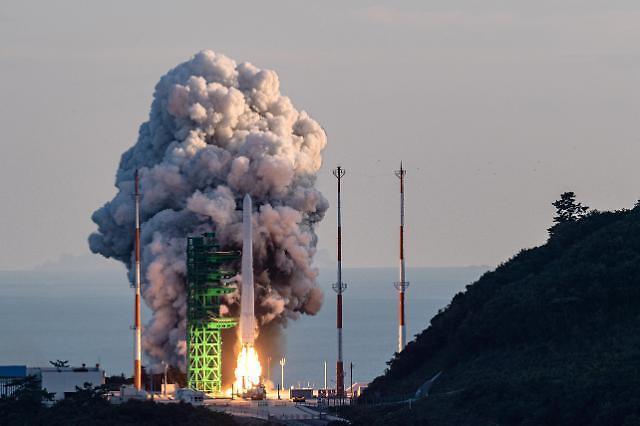
[Yonhap Photo]
While solid-propellant rockets are used in military armament or as light launch vehicles because of their simplicity and reliability, liquid-propellant rockets offer more efficiency and precise control. Liquid-fueled rockets are mostly used to shoot satellites or projectiles into an orbit or for long-distance missions. Through the "2022 Space Challenge Project," the science ministry aims to develop key components of the 100-ton-class high-performance liquid-propellant engine.
The science ministry said in a statement on February 8 that the liquid-propellant rocket engines will be developed to send a probe to the moon. "The ministry will provide full support for the development of high-performance liquid-propellant rocket engines to complete space transport missions including a lunar landing project and the Korean Positioning System (KPS) through domestic capabilities," Kwon Hyun-joon, a ministry official in charge of the space industry, was quoted as saying. South Korean scientists have been allowed to participate in NASA's development of a payload system for lunar landers that would be used for a program to send humans on the moon by 2024.
The first South Korean projectile KSLV-2, also known as Nuri, launched in October 2021 used a 75-ton-class liquid-propellant engine. Although Nuri succeeded in reaching its target altitude, it has failed to release a dummy satellite into orbit. An improved engine should be developed to successfully carry out space missions. The ministry will invest a total of 12 billion won by 2023 and the engine will be developed by the Korea Aerospace Research Institute.
To enable an ultra-precision location data service, South Korea aims to secure the KPS by 2035. The technology is based on seven satellites that can provide independent positioning and navigation signals over an area spanning a 1,000-kilometer radius from Seoul. The KPS can reduce the error range of positioning in its service area to less than one meter. As part of the state lunar exploration mission to launch a lunar orbiter in 2022, a hemispherical antenna reflector with a diameter of 35 meters was installed at a ground control tower in Yeoju some 55 kilometers (34 miles) southeast of Seoul.
Copyright ⓒ Aju Press All rights reserved.




